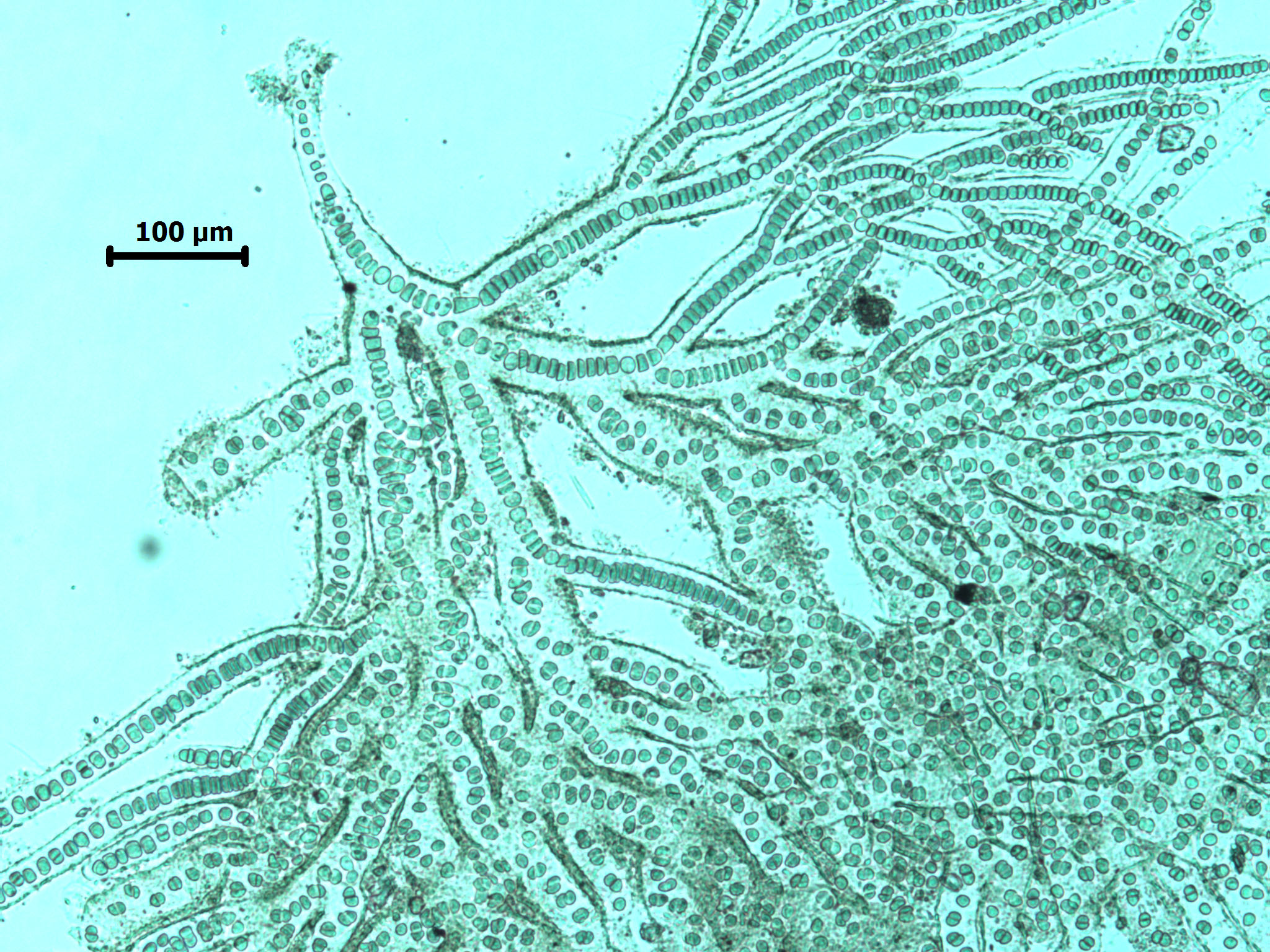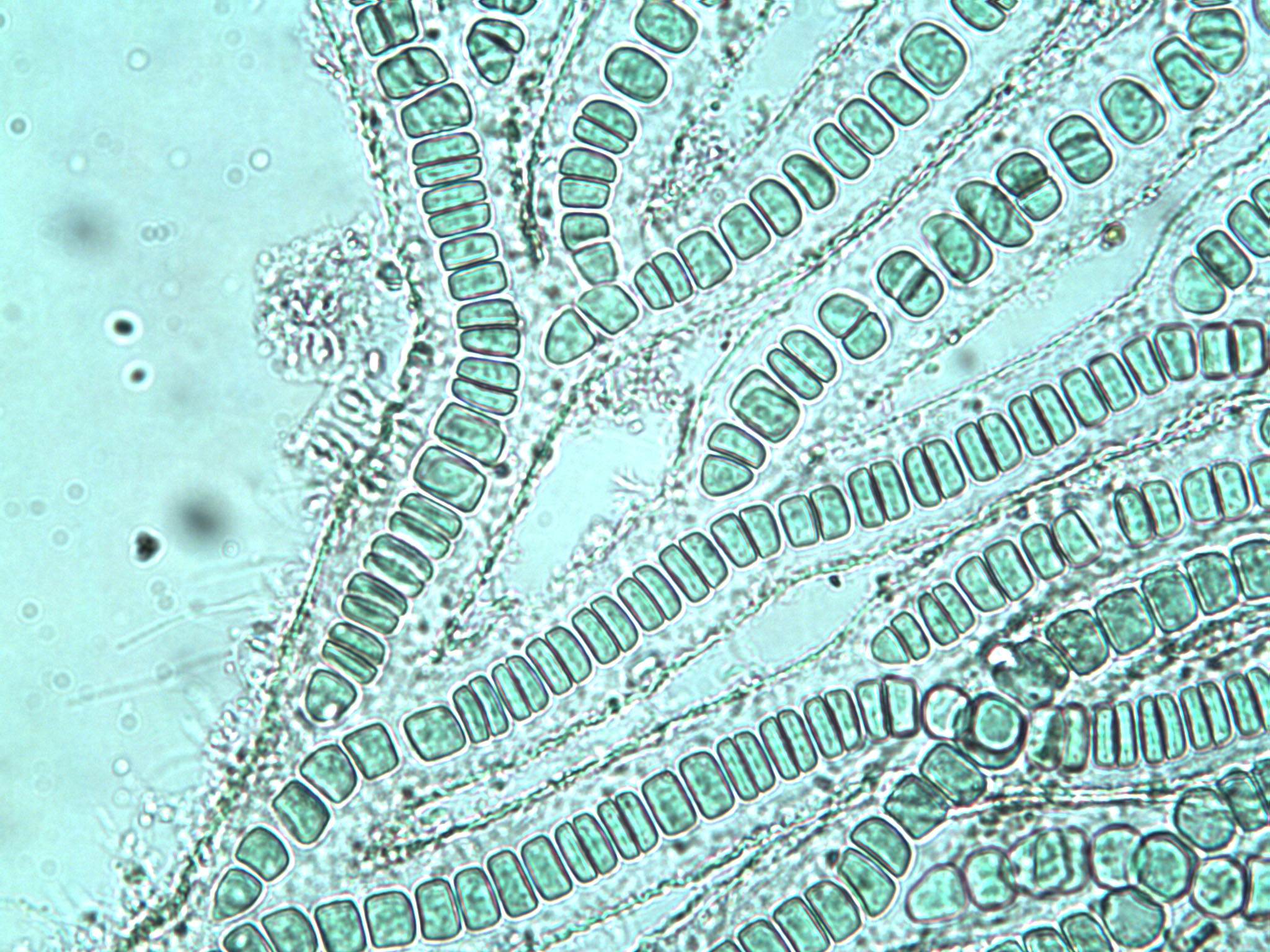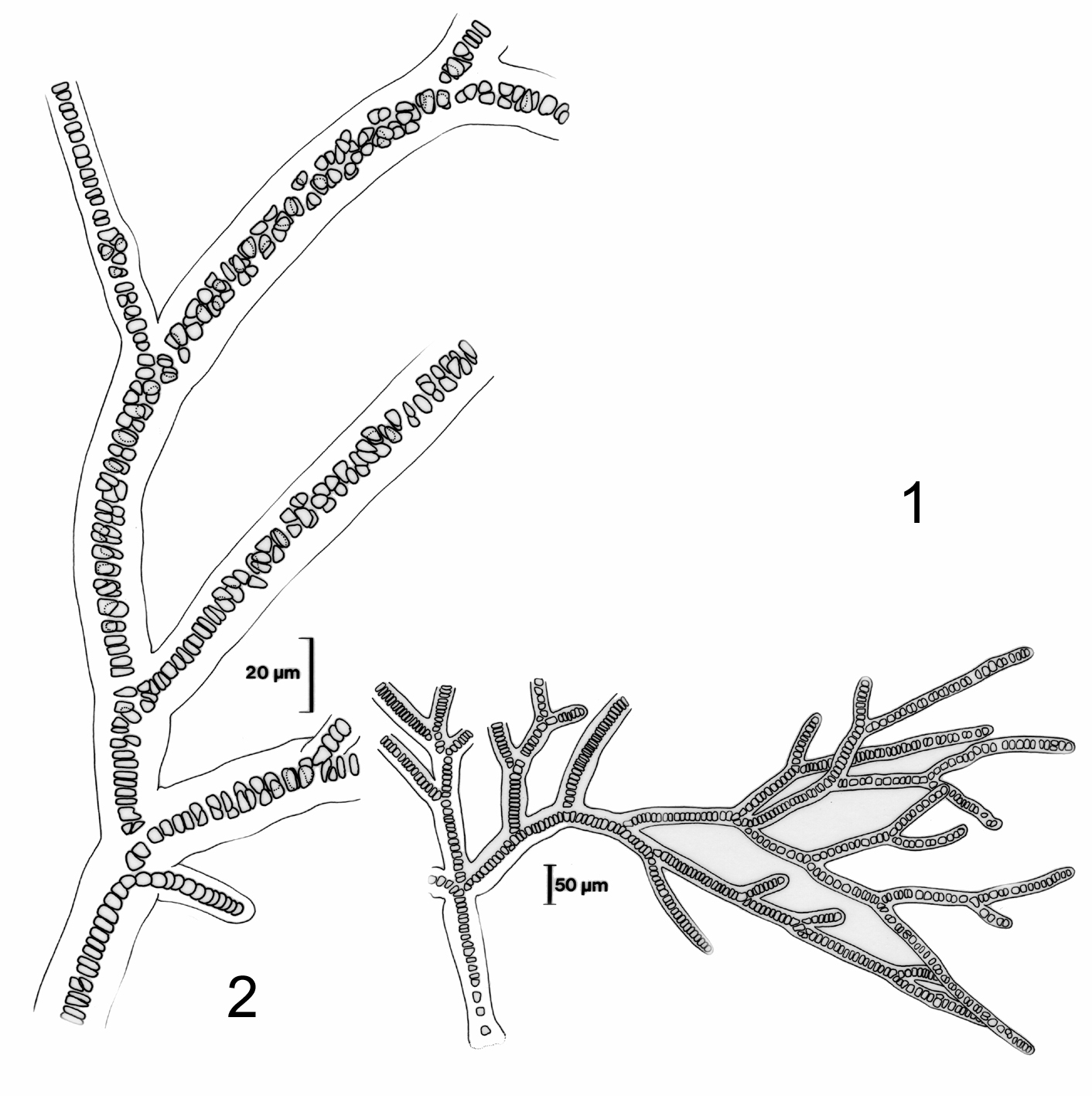Seaweeds of the South African South Coast


Order Stylonematales
Family Stylonemataceae
Stylonema Reinsch
Thalli minute, consisting of uniseriate or multiseriate filaments of cells in a mucilaginous sheath; filaments branched, unbranched or forming a monostromatic blade. Single stellate chloroplast with central pyrenoid in each cell. Growth diffuse or intercalary but sometimes apical in first stages of development. Attached by basal cell, which may be enlarged. Sexual reproduction unknown, asexual reproduction by transformation of vegetative cells into monosporangia that each release a single, naked monospore. Thalli usually epiphytic or epizoic. The genus is widespread is widespread in temperate and tropical seas; three species are currently recognised, of which two have been recorded from the SA south coast.
Stylonema alsidii (Zanardini) Drew 1956: 72
Plants, epiphytic, red, up to 10 mm tall, irregularly branched. Holdfast a simple undifferentiated basal cell. Thalli of uniseriate filaments of cells, becoming multiseriate in older parts, embedded in a thick, clear, mucilaginous sheath; about 40 µm in diameter basally narrowing to about 15 µm at apices. Cells 10-14 µm in diameter, 1-3 times as broad as long, containing a single stellate chloroplast and a central pyrenoid. Reproduction by transformation of vegetative cells to produce monospores; sexual reproduction unknown.
Collections, ecology and regional distribution
Epiphytic on various algae in rock pools and the sublittoral fringe. Recorded from Saldanha Bay on the west coast to northern Kwazulu-Natal (13-58).
World distribution: Worldwide in temperate and tropical seas (Guiry & Guiry 2012); in southern Africa also known from Namibia (Rull Lluch 2002) and Mozambique and Tanzania (Silva et al. 1996).
Type locality: Trieste, Adriatic Sea (Silva et al. 1996).
Notes: 1. Previously known as Goniotrichum alsidii (Zanardini) Howe or G. elegans (Chauvin) Zanardini (see Wynne 1985).
Note: Stylonema cornu-cervi Reinsch (as Goniotrichum cornu-cervi (Reinsch) Hauck was recorded once from Hluleka, Eastern Cape, by Bolton & Stegenga (1987). The branches in this species are uniseriate at the base and apex, but otherwise 2-5 (or more) cells wide. It is also recorded from northern Namibia, close to the Angolan border (Rull Lluch, 2002).

Stylonema alsidii (base uppermost), showing uniseriate branches.

Stylonema alsidii, detail of cells and branching.

Stylonema alsidii. Microscopic habit. 2. Detail showing development of multiseriate thallus (reproduced from Stegenga et al. 1997).
References Stylonema
Bolton. J. J. & H. Stegenga (1987). The marine algae of Hluleka (Transkei) and the warm temperate/sub-tropical transition on the east coast of southern Africa. Helgoländer Meeresuntersuchungen 41: 165-183.
Drew, K.M. (1956). Conferva ceramicola Lyngbye. Botanisk Tidsskrift 53: 67-74, 2 figs.
Guiry, M.D. & Guiry, G.M. 2012. AlgaeBase. World-wide electronic publication, National University of Ireland, Galway. http://www.algaebase.org; searched 18 October 2012.
Rull Lluch, J. (2002). Marine benthic algae of Namibia. Scientia Marina 66 (Supplement 3): 258 pp.
Silva, P.C., Basson, P.W. & Moe, R.L. (1996). Catalogue of the benthic marine algae of the Indian Ocean. University of California Publications in Botany 79: 1-1259.
Stegenga, H., Bolton, J.J. and R. J. Anderson. 1997. Seaweeds of the South African west coast. Contributions from the Bolus Herbarium 18: 655 pp.
Wynne, M. J. (1985). Nomenclatural assessment of Goniotrichum Kuetzing, Erythrotrichia Areschoug, Diconia Harvey and Stylonema Reinsch (Rhodophyta). Taxon, 34: 502-505.
Cite this record as:
Anderson RJ, Stegenga H, Bolton JJ. 2016. Seaweeds of the South African South Coast.
World Wide Web electronic publication, University of Cape Town, http://southafrseaweeds.uct.ac.za; Accessed on 05 January 2026.